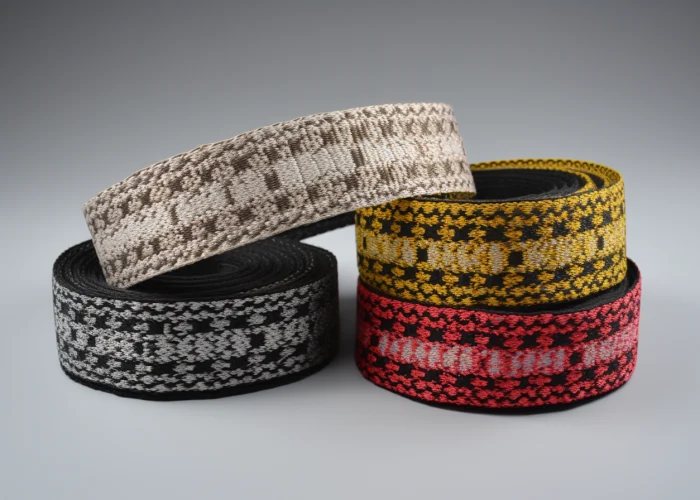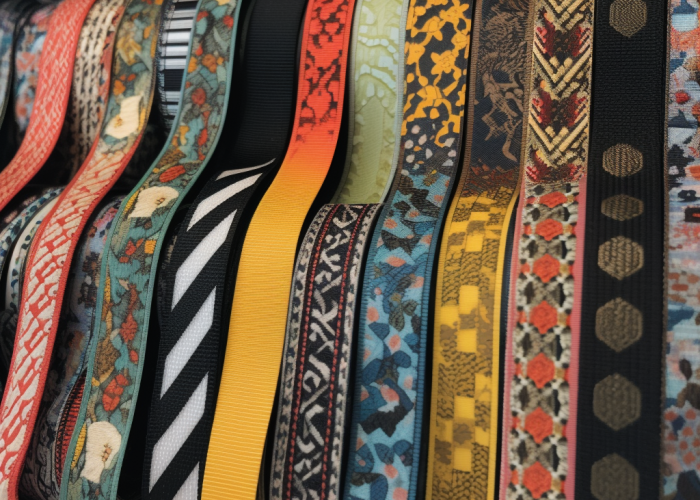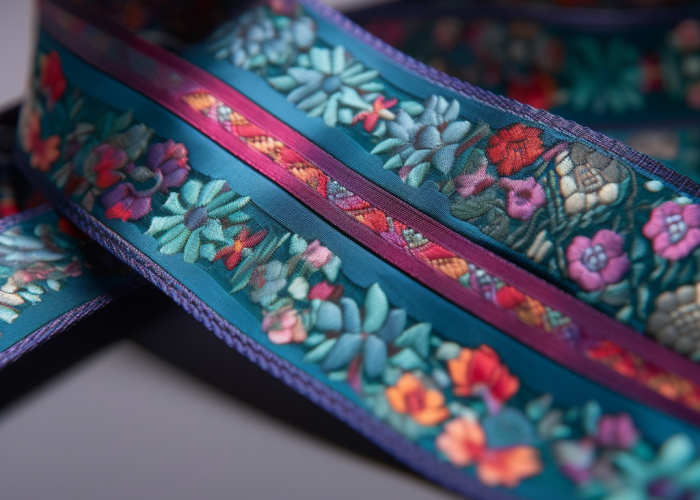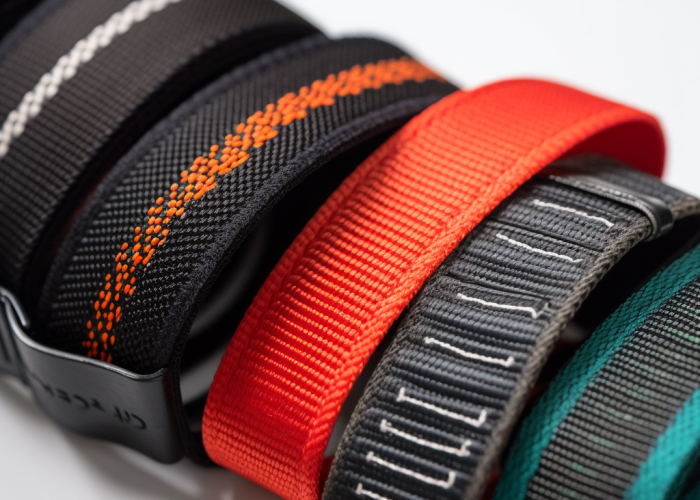As a custom webbing manufacturer, we regularly help brand manufacturers and product developers navigate the critical decision of selecting the right printing method for their specific applications. This post addresses the common challenge of understanding which printing technique will deliver optimal results for your design requirements, production volume, and budget constraints while ensuring long-term product performance.
There are seven main webbing printing methods available: screen printing, heat transfer, digital printing, dye sublimation, jacquard weaving, embroidery, and pad printing. Each method offers distinct advantages depending on design complexity, production volume, durability requirements, and material compatibility.
Get performance data and selection tips to avoid costly mistakes and optimize specs with expert guidance from our manufacturing experience.


Webbing manufacturing expert with 15+ years of experience helping product developers build high-performance straps for industrial, medical, and outdoor use.
Digital printing and heat transfer excel at complex multi-color webbing designs, with digital printing eliminating color restrictions entirely and heat transfer enabling seamless gradient reproduction through specialized transfer processes that accommodate unlimited color variations.
Multi-Color Design Approach by Method:
Digital printing uses inkjet technology to apply complete designs directly onto webbing surfaces, treating multi-color graphics as single print jobs rather than layered color applications. From our manufacturing experience, digital methods consistently achieve the most accurate color matching for brand-specific palettes and complex logo reproduction requiring precise color registration.
Heat transfer and sublimation methods handle intricate color transitions and gradient effects through complete design transfer from specially printed papers. These processes excel at reproducing smooth color blends and photographic images where color boundaries blur together seamlessly. The single-step transfer process maintains color integrity across the entire design without registration concerns.
In practical production scenarios, complex multi-color projects using traditional screen methods create exponential cost increases—each additional color requires separate screen preparation, precise registration alignment, and sequential printing passes. A four-color logo that takes one digital print cycle demands four separate setup procedures with screen printing, making traditional approaches cost-prohibitive for designs exceeding three distinct colors.
Design Takeaway: For designs requiring more than four colors or featuring photographic elements, specify digital printing to eliminate color count penalties. When gradient effects are essential design elements, heat transfer methods provide superior blending capabilities.
Jacquard weaving integrates patterns directly into the webbing’s structural fibers during manufacturing, while all surface printing methods apply designs as secondary layers on completed webbing substrates creating fundamental differences in pattern permanence and design limitations.
Manufacturing Process Distinction:
Jacquard weaving constructs patterns by controlling individual warp and weft threads during actual webbing formation. This integration makes the design structurally inseparable from the webbing itself, as the pattern exists within the fiber architecture rather than as an additional surface element. The resulting durability surpasses any surface application method since mechanical wear cannot separate the design from the base material.
Surface printing methods—encompassing screen, digital, heat transfer, and sublimation techniques—operate on finished webbing substrates by adding design layers through various application processes. These methods offer vastly superior design freedom, enabling photographic reproduction, unlimited color palettes, and intricate detail levels impossible with weaving constraints.
From our production experience, jacquard weaving requires specialized loom programming and initial setup investment, but eliminates recurring material costs like inks, transfer papers, and surface preparation chemicals. Simple geometric patterns often achieve better economics through jacquard production, while complex graphics with multiple colors favor printing approaches due to weaving’s inherent design limitations.
Design Takeaway: Select jacquard weaving for applications prioritizing ultimate pattern durability over design complexity—optimal for safety equipment or long-term outdoor use. Choose surface printing methods when design intricacy or photographic elements are essential requirements.

Digital printing provides the fastest production turnaround for webbing orders through immediate design-to-production capability, while pad printing offers rapid completion for small localized applications requiring only simple plate preparation and direct transfer processes.
Turnaround Speed by Application Type:
Digital printing eliminates traditional preparation bottlenecks by applying designs directly from digital files without physical screens, plates, or color mixing procedures. Projects can transition from approved artwork to finished samples within the same working day, making this method essential for prototype development and rush orders where timeline constraints outweigh volume economics.
Pad printing specializes in rapid execution for focused applications like small logos, text, or detail elements. The process uses prepared silicone pads to transfer ink from etched plates directly onto specific webbing areas, completing localized printing tasks in minutes rather than hours. This targeted approach proves highly efficient when full-width coverage isn’t required.
Production scheduling analysis from our facility operations shows that rush orders consistently favor methods with compressed lead times over those requiring extensive preparation phases. Emergency projects demanding next-day delivery typically succeed only through digital processing, while traditional methods requiring screen preparation cannot accommodate urgent timelines.
Design Takeaway: For urgent projects requiring same-day or next-day completion, specify digital printing to eliminate preparation delays. When only small logos need printing under tight deadlines, pad printing provides optimal speed for localized applications.
Dye sublimation offers superior fade resistance for webbing applications through molecular-level dye integration into polyester fibers, creating permanent color bonds that resist UV degradation more effectively than any surface-coating printing method.
UV Resistance Performance Rankings:
Dye sublimation achieves exceptional fade resistance by converting solid dyes into gas using controlled heat application, enabling molecular penetration directly into polyester webbing fibers. This chemical integration creates color permanence equivalent to the base material’s UV stability rather than relying on surface-level color retention. Laboratory accelerated aging tests demonstrate sublimated colors maintaining intensity after UV exposure periods that completely degrade surface-applied alternatives.
Solution-dyed fiber applications provide ultimate color permanence by integrating pigments during actual fiber manufacturing. This approach eliminates all surface-applied colorants, making fade resistance dependent solely on the fiber’s inherent UV stability rather than any secondary application method.
Outdoor exposure testing reveals significant performance differences between molecular integration methods and surface applications. Heat transfer printing using specialized UV-resistant ink formulations can achieve moderate fade resistance, but shows measurable degradation under continuous direct sunlight exposure. Screen printing performance varies dramatically based on ink chemistry, with standard formulations showing rapid color loss while specialty UV-resistant inks provide improved but still limited outdoor longevity.
Design Takeaway: For maximum fade resistance in outdoor applications, specify dye sublimation on polyester webbing to achieve molecular-level color integration. When extreme durability is required, consider solution-dyed colored fibers integrated during manufacturing rather than any post-production printing method.

Dye sublimation works exclusively on polyester webbing, while digital and screen printing offer broad material compatibility across nylon, cotton, and polypropylene substrates with specific adhesion and performance characteristics varying by material composition and surface treatment requirements.
Material Compatibility Matrix:
Polyester webbing provides the broadest printing compatibility due to its synthetic fiber structure, heat resistance, and consistent surface characteristics. All printing methods perform reliably on polyester substrates, with sublimation achieving unique molecular integration impossible on other materials. From our material testing protocols, polyester consistently delivers the highest color vibrancy and adhesion strength across different printing techniques.
Nylon webbing demonstrates excellent receptivity to most printing applications, particularly excelling with digital and screen printing methods through strong synthetic fiber bonding. The material’s smooth surface texture and chemical composition create ideal conditions for ink adhesion without requiring extensive pretreatment procedures.
Cotton webbing presents absorption challenges due to its natural fiber composition and variable surface texture. Screen printing achieves superior results through forceful ink application that penetrates cotton fibers deeply, while other methods may experience adhesion difficulties or color bleeding without proper substrate preparation.
Polypropylene webbing demands specialized approaches due to its extremely low surface energy and chemical resistance properties. Most standard printing inks cannot achieve adequate bonding without corona discharge treatment or chemical primer applications to modify the surface receptivity.
Design Takeaway: Select printing methods based on substrate compatibility requirements—polyester offers maximum flexibility for any printing technique. For cotton applications, prioritize screen printing to ensure adequate ink penetration and durability performance.

Embroidery creates distinctive premium texture through dimensional thread application, while specialized screen printing techniques using raised ink formulations provide moderate surface texture enhancement for applications requiring tactile differentiation from standard smooth printing finishes.
Premium Texture Creation Methods:
Embroidery delivers unmatched premium tactile quality by creating raised thread patterns that add dimensional depth and luxury aesthetic appeal to webbing surfaces. This technique involves precision stitching of decorative patterns or logos directly onto finished webbing using specialized threads, creating distinctive texture that immediately communicates quality positioning and craftsmanship excellence to end consumers.
Raised screen printing offers moderate texture enhancement through specialty ink formulations designed to create elevated surface characteristics during the curing process. These formulations contain additives that expand or maintain dimensional properties after application, resulting in tactile variation that distinguishes products from standard flat printing finishes while remaining more cost-effective than embroidery applications.
Textured vinyl heat transfer provides another premium option through pre-manufactured dimensional elements applied using heat and pressure. This approach enables complex textural patterns and metallic effects impossible through traditional printing methods, though the applied nature requires careful consideration of durability requirements.
Quality positioning analysis from luxury product applications shows that tactile differentiation significantly influences perceived value and brand positioning. Premium consumers consistently associate dimensional texture with superior craftsmanship and attention to detail compared to smooth surface alternatives.
Design Takeaway: For maximum luxury positioning and tactile distinction, specify embroidery to create pronounced dimensional texture that communicates premium quality. When moderate texture enhancement is sufficient, raised screen printing provides cost-effective tactile differentiation while maintaining production efficiency.

Screen printing offers optimal cost efficiency for large-volume webbing orders, while digital printing excels for complex designs and quick turnaround. Dye sublimation provides superior fade resistance, and embroidery creates premium texture. Method selection depends on volume, complexity, material compatibility, and performance requirements. Contact us to explore custom webbing printing manufacturing solutions tailored to your product requirements.
Digital printing accepts standard digital files (AI, PDF, PNG) with 300 DPI minimum resolution. Screen printing requires vector files with color separations for each ink color. Heat transfer needs proper orientation files for transfer application. Embroidery requires digitization conversion, which can add 24-48 hours to initial setup timelines for new designs.
Dye sublimation on polyester webbing provides maximum outdoor durability with molecular-level color integration that resists UV fade and weather exposure. Screen printing with UV-resistant inks offers good outdoor performance for most applications, while standard digital and heat transfer methods show moderate outdoor durability depending on ink formulations and environmental exposure levels.
Embroidery creates premium positioning through dimensional texture and luxury appeal, ideal for high-end applications. Dye sublimation suggests technical performance and durability. Screen printing conveys reliability and professional quality. Digital printing enables complex branding and photographic reproduction. Method selection should align with intended market positioning and brand messaging strategies.
Digital printing excels for small batches under 100 pieces with no minimum order requirements and eliminated setup costs. Heat transfer methods work well for quantities of 25-100 pieces. Screen printing typically requires 50+ piece minimums to justify setup costs, while embroidery can be viable for smaller quantities depending on design complexity and digitization requirements.
Digital printing offers the fastest time-to-market with immediate production capability and typically 3-5 business day turnaround times. No setup requirements allow production to begin immediately from approved digital files, making it ideal for urgent product launches, prototyping, and market testing phases requiring rapid turnaround.
For medium production runs of 500-2000 pieces, screen printing typically provides the best cost efficiency once setup costs are amortized across the quantity. Heat transfer methods work well for the lower end of this range (500-1000 pieces), while digital printing becomes less cost-effective above 500 pieces due to higher per-unit costs without setup fee advantages.